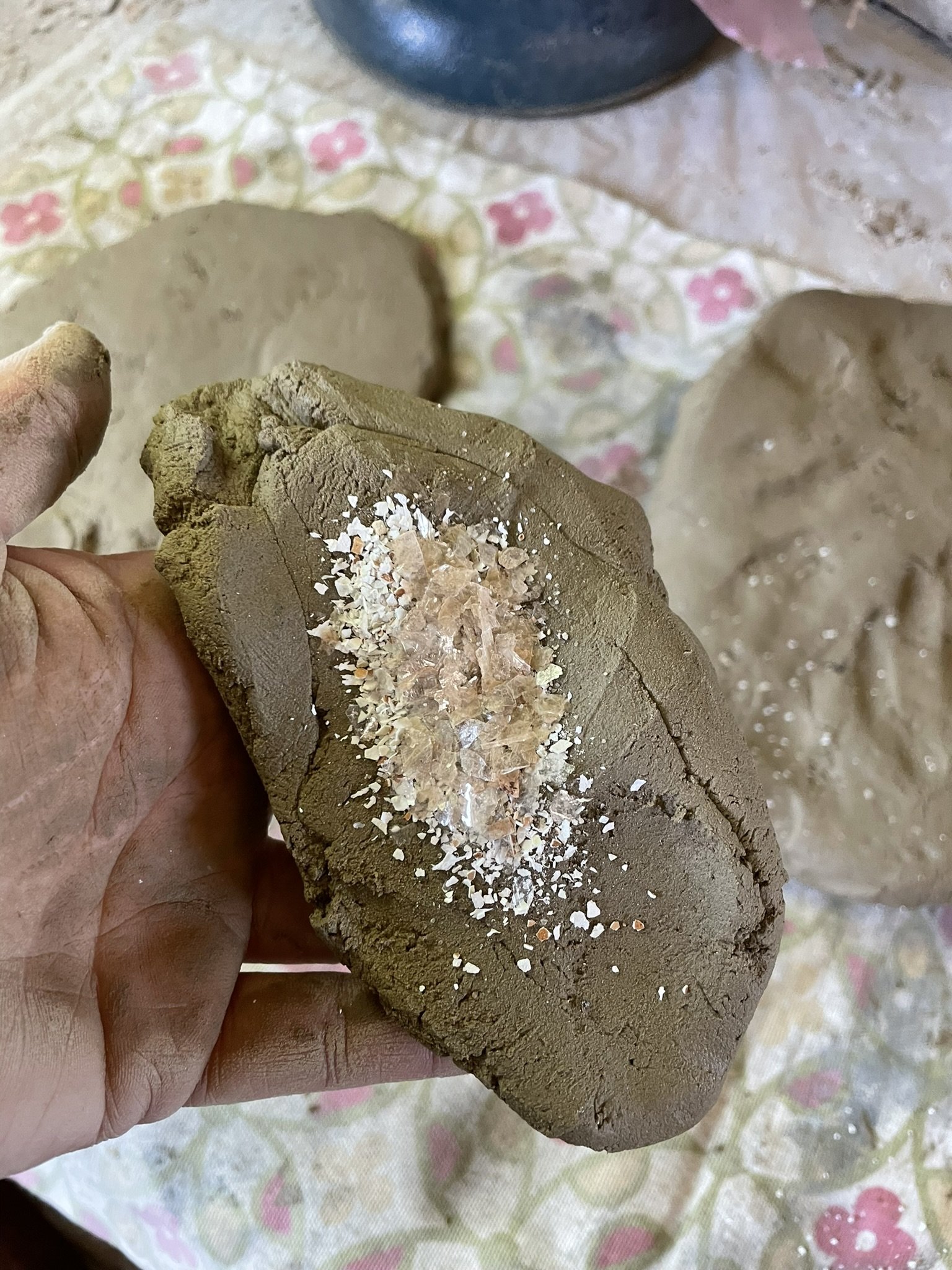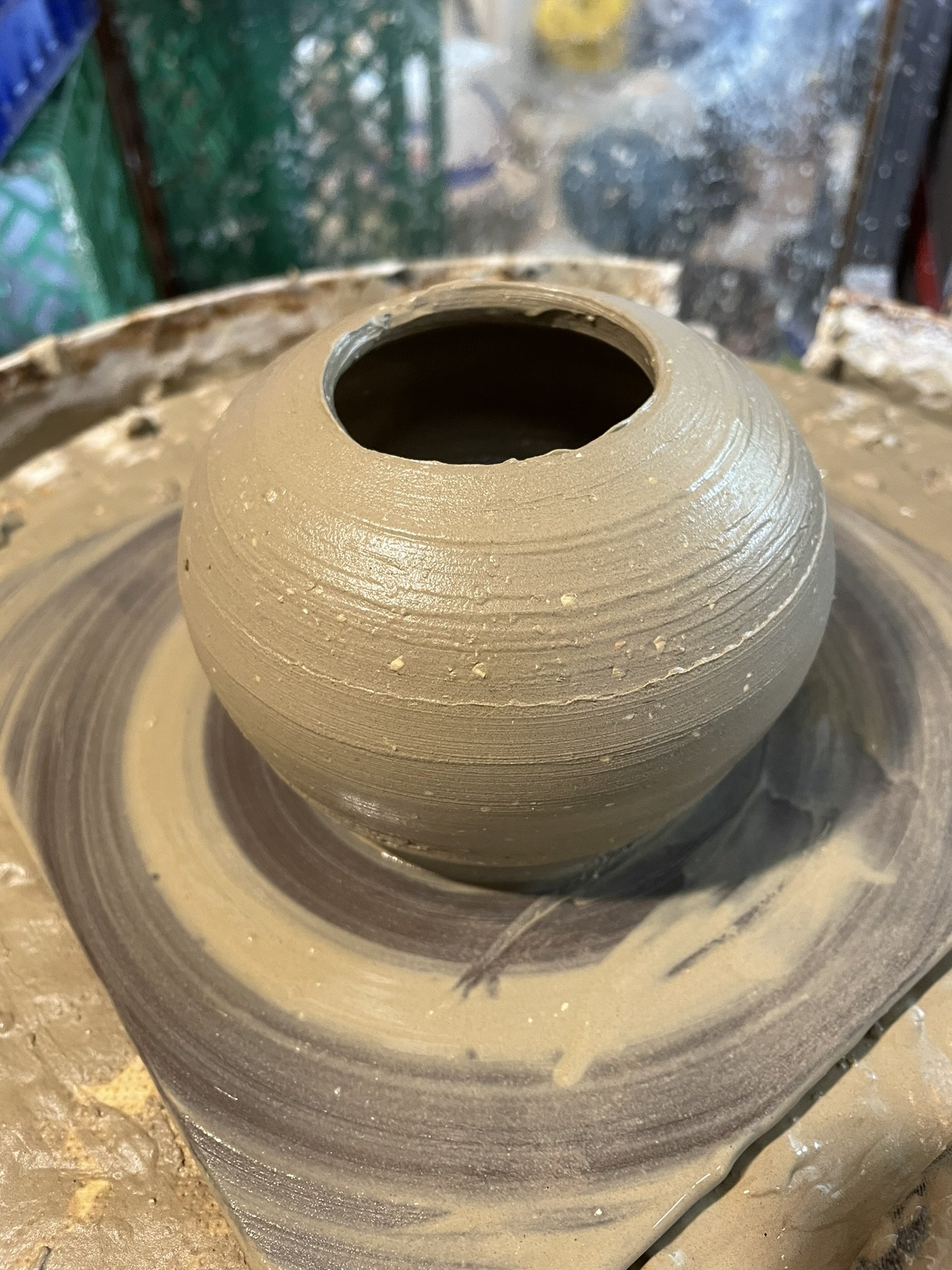I’ve been on a mission to learn from the clay that I find on our farm. When we dig anywhere here, we often run into deposits of yellow clay. I know nothing about its properties but am fascinated by the possibilities. Last year, I started by making a few small testers and added them to other pots I was firing in my kiln. The low fire (cone 04) resulted in the clay turning red. The next firing was at cone 1, and it turned a dark brown and became shiny. At cone 4 it melted into a nasty looking puddle.
The clay felt gritty and was difficult to work with, cracking if it was too dry and becoming wobbly and almost unworkable when I added water. I was very surprised to find that it behaved beautifully on the wheel when I gave it a try last week. I’ve made a few small pieces so far and plan on going bigger, pushing to see what the clay’s thresholds are.
Last winter, on my travels, I hiked to a mica mine in Colorado. I crumbled some of the mica and added it to the clay body. The shiny flakes are beautiful, especially against the black markings from the fire. I’ve also crushed and added some eggshells from our chickens, hoping that the calcium adds a little more stability to the clay and if nothing else, some texture.
I recently pit fired a few small pieces by digging a hole and lining it with rocks in our campfire ring. The pots barely began to vitrify, but they did become solid. The carbon from the wood added beautiful black markings. The little pots held up well to the thermal shock of the unregulated temps of the fire. I’ve decided to not take chances with the larger, more delicate thrown pieces which I’ll fire in the kiln. (Well, who am I kidding, of course I’ll throw one into the fire to see what happens. I can’t help it.)
adding mica to the clay
pit firing small pots
clay on the wheel with mica and eggshell inclusions
beautiful natural markings





